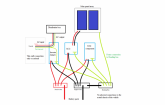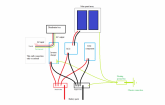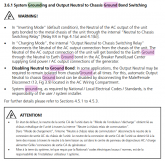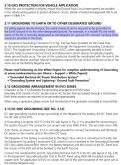I promised Will I wouldn't get into a crap fight on the forum, but isn't there a rule against insulting users?
Doesn't that apply to 'Moderators' as well?
I have no idea where that *Claim* came from, but let someone get a video rolling before you try and 'Prove' it on some 17,000 Volt AC line, and I'll donate the rubber bath mat for you to stand on so you aren't 'Grounded'...
Almost correct.
Having built several AC generators myself, and rewinding thousands, you *Almost* have that correct, except for the the pesky details, like differentials, induction/inductance, capacitance, impedance, and a hundred other terms virtually no one understands the interactions of since they all learned from an HVAC training program, or a linemans textbook, or some other very specific training program that didn't cover what they weren't going to have to deal with on a daily basis.
Correct.
AC is a transmission because it has frequancy, throws ions, develops counter rotating magnetic fields around the conductors that spin off electro-magnetic energy 50 or 60 times a second, ect.
Patently FALSE.
I can't even begin to start on how wrong that is...
Most NATURAL forces are CONSTANT, and that's why we call them 'FUNDAMENTAL CONSTANTS'.
We can start with a free electron ALWAYS seeking a conductor and move on from there if you care to, but not in this 'Help Me' thread you participated in shredding and confusing.
And AGAIN, patently FALSE.
This is a bastardization of 'Chaos Theory' explanation, which is philosophy ('Belief') and not actual hard science or any kind of factual account of how electrical currents are produced, conducted, transmitted, ect.
And AGAIN, like mass having gravity and the electro-magnetic link, these are CONSTANTS throughout the universe.
They can be PRECISELY measured, accounted for, depended on,
A free (Negative) electron will ALWAYS seek a positively charged molecule with a free space in the outer valance shell (You call those molecules 'Conductors'), it's a constant across all elements...
Just like a MOVING magnetic field will ALWAYS INDUCE (Inductance) the extra electron out of it's valance shell to free it (you call it electrical current), it's another constant of the universe...
Incorrect, and false, but this 'Help Me Understand' thread is no place to try and expand your education, even if you were willing...






